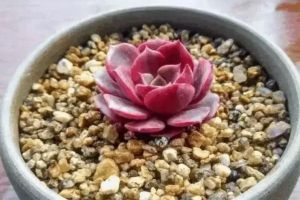Asparagus has been raised for 10 years, leaping 2 stories, all because of the addition of it!

Asparagus takes a big tonic and becomes a big pine tree in a month!
Now more and more friends like to take traditional Chinese medicine to recuperate their bodies, but don't waste the residue of traditional Chinese medicine. If you use it to raise asparagus, it will be able to rub and leap higher than people!
1. The leftover Chinese medicine dregs are collected, laid flat in the sun and dried for 1-2 days.
2. Prepare a retting bucket or directly use a large flowerpot. First lay a layer of garden soil at the bottom of the basin, then lay a layer of traditional Chinese medicine residue, and stack it up in turn.
3. The last layer is covered with about 3-5cm of garden soil, watered thoroughly, sealed with plastic film, fermented in a sunny place and breathed once every 3-5 days.
4. After two months, the soil is basically ready. Directly mixed with the flower soil of asparagus, it can continue to provide nutrients for the growth of asparagus!
If asparagus turns yellow, it immediately becomes green!
The most common problem encountered in the conservation of asparagus is probably that the leaves turn yellow, and as soon as the leaves turn yellow, the asparagus will not look good. But don't worry, Huahua will teach you the exclusive recipe to ensure that the leaves will never turn yellow again!
1. Too much watering leads to yellowing
Asparagus likes a humid environment, but that doesn't mean it can be watered a lot. If too much watering causes sticky and wet stagnant water in the basin, the root of asparagus can not breathe smoothly, and the leaves will inevitably turn yellow.
Solution: cut off the yellowing leaves, reduce the amount of water, and put asparagus in a cool and ventilated place.
2. Too little moisture leads to yellowing
Some friends will often forget to water asparagus, for a long time, asparagus can not bear, they began to slowly yellow.
Solution: pour the water thoroughly and put the asparagus in a well-ventilated place. Usually pay attention to spraying water to ensure the humidity of the environment.
3. Too little light leads to yellowing
Flower friends to see this will ask, asparagus does not like the light? Although asparagus likes shady places, everything needs light to grow, and the overly dark environment is not suitable for the healthy growth of asparagus.
Solution: put asparagus in an environment with sufficient scattered light. If you want to keep asparagus in poor light for a long time, you should move it to a bright place every few days to bask in it.
4. Too strong light leads to yellowing
Autumn is coming, and many friends begin to move asparagus out. Although autumn is coming, but the sun is still relatively strong, two days in a row, asparagus yellow no wonder!
Solution: move asparagus back to the brightly lit room, put it in a well-ventilated place, and cut off the yellowing leaves.
5. Excessive fertilization leads to yellowing
Many friends envy that other people's asparagus are tall and strong, so they keep feeding their own asparagus, but the thin asparagus can not be absorbed, but it will also cause fat injury and yellowing leaves.
Solution: if it is the initial yellowing, irrigation with flood water to reduce the concentration of fertilizer in the basin soil. If irrigation has no effect, it should hurt the root and need to trim the root and put it back on the basin.
Asparagus rotten roots to do so, renewed vitality!
1. Cut all the withered and yellow leaves and stems of asparagus.
2. After pruning, remove the asparagus from the basin and rinse all the soil on the root system in clean water.
3. Use a pair of sterilized scissors to cut off all the rotten parts of the root system of asparagus, and then put the asparagus in a ventilated place to dry.
4. In the soil where asparagus is replanted, rotten leaf soil and coarse sand can be mixed at the ratio of 7:3. Before loading the soil into the flowerpot, put a screen in the outlet so as not to block the outlet caused by late watering.
5. Put the dried asparagus back into the basin, and then put it in a cool and ventilated place for maintenance. Don't pour too much water, just keep the soil slightly moist.
6. After a period of time, asparagus will sprout again and glow with vitality!
- Prev

1 rubber band 1 basket, succulent immediately grow root, 100% survival!
Autumn is coming, Huahua just wants to ask, how is your succulent plant? But in any case, the hot weather is finally over, for those rolled off the leaves, or beheaded succulent, naturally it is time to take root! Let's take a look at how to make succulent plants take root quickly.
- Next

Autumn windowsill plant pot it, a 100 days open, burst up can not stop!
After the extreme heat, the flowers at home are tired, but fortunately, the temperature has dropped, and it is time for a new round of sowing! Today, Huahua will recommend some flowers that are most suitable for sowing in autumn. Flower friends quickly sow seeds, and your windowsill will bloom in less than three months!
Related
- What if the leaves of potted flowers turn yellow?
- Florescence Control of several Flowers
- Anti-freezing technology and post-freezing nursing technology of flowers
- What is the classification of flowers? What are the common methods of flower classification?
- Prevention and control of alkali and acid damage of flowers in courtyard
- Technology of Anti-freezing and restoring growth of Flower seedlings in greenhouse and greenhouse
- How does flower fertilization not hurt the root? Fertilization technology of flowers
- Key points of disinfection in flower greenhouse
- Several pesticides that are banned or used cautiously in flowers
- How to fertilize the flowers that watch the leaves?

